Abstract
Attitudes to home artificial nutrition (HAN) in cancer vary greatly from country to country. A 6-year prospective survey of the practice of HAN in advanced cancer patients applied by a hospital-at-home programme in an Italian health district was performed to estimate the utilization rate, to evaluate efficacy in preventing death from cachexia, maintaining patients at home without burdens and distress and improving patients' performance status, and to obtain information about costs. Patients were eligible for HAN when all the following were present: hypophagia; life expectancy 6 weeks or more, suitable patient and family circumstances; and verbal informed consent. From July 1990 to June 1996, 587 patients were evaluated; 164 were selected for HAN (135 enteral and 29 parenteral) and were followed until 31 December 1996. The incidence of HAN per million inhabitants was 18.4 in the first year of activity and 33.2-36.9 in subsequent years, being 4-10 times greater than rates reported by the Italian HAN registers. On 31 December 1996, 158 patients had died because of the disease and 6 were on treatment. Mean survival was 17.2 weeks for those on enteral nutrition and 12.2 weeks for those on parenteral nutrition. Prediction of survival was 72% accurate. 95 patients had undergone 155 readmissions to hospital, where they spent 15-23% of their survival time. Burdens due to HAN were well accepted by 124 patients, an annoyance or scarcely tolerable in the remainder. The frequency of major complications of parenteral nutrition was 0.67 per year for catheter sepsis and 0.16 per year for deep vein thrombosis. Karnofsky performance score increased in only 13 patients and body weight increased in 43. The fixed direct costs per patient-day (in European Currency Units) were 14.2 for the nutrition team, 18.2 for enteral nutrition and 61 for parenteral nutrition. The results indicate that definite entry criteria and local surveys are required for the correct use of HAN in advanced cancer patients, that HAN can be applied without causing additional burdens and distress, and that its costs are not higher than hospital costs.
Full text
PDF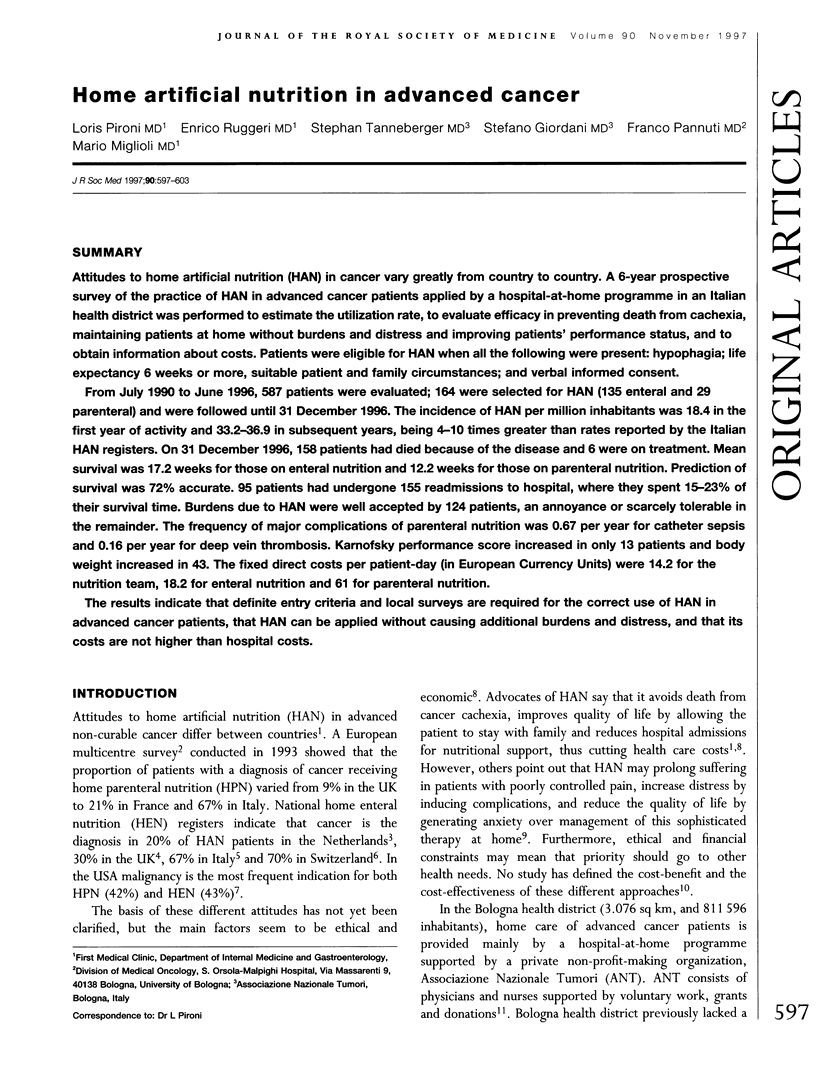
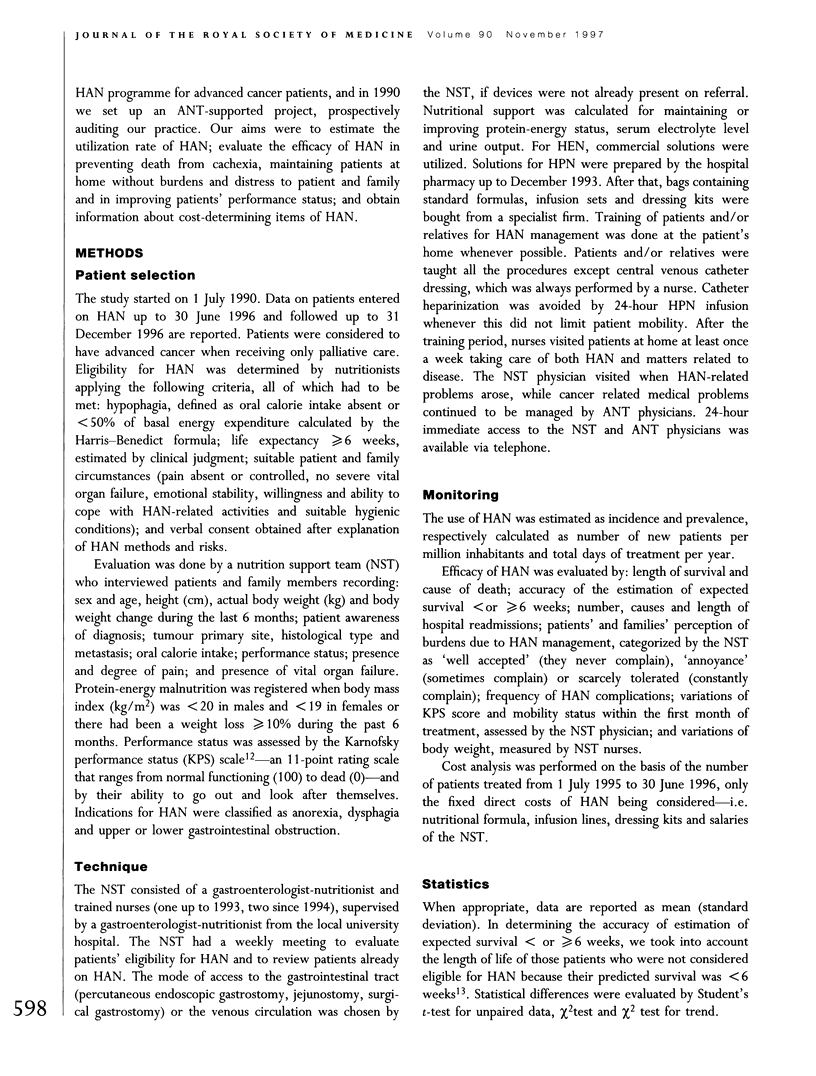
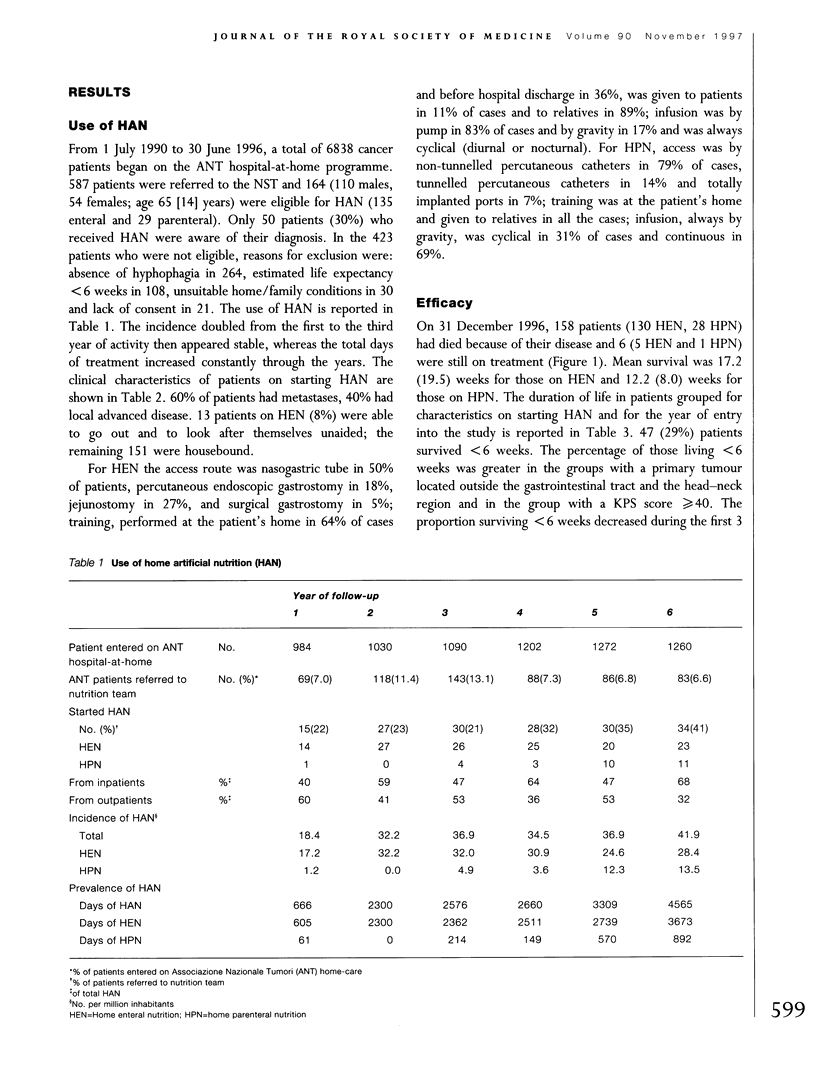
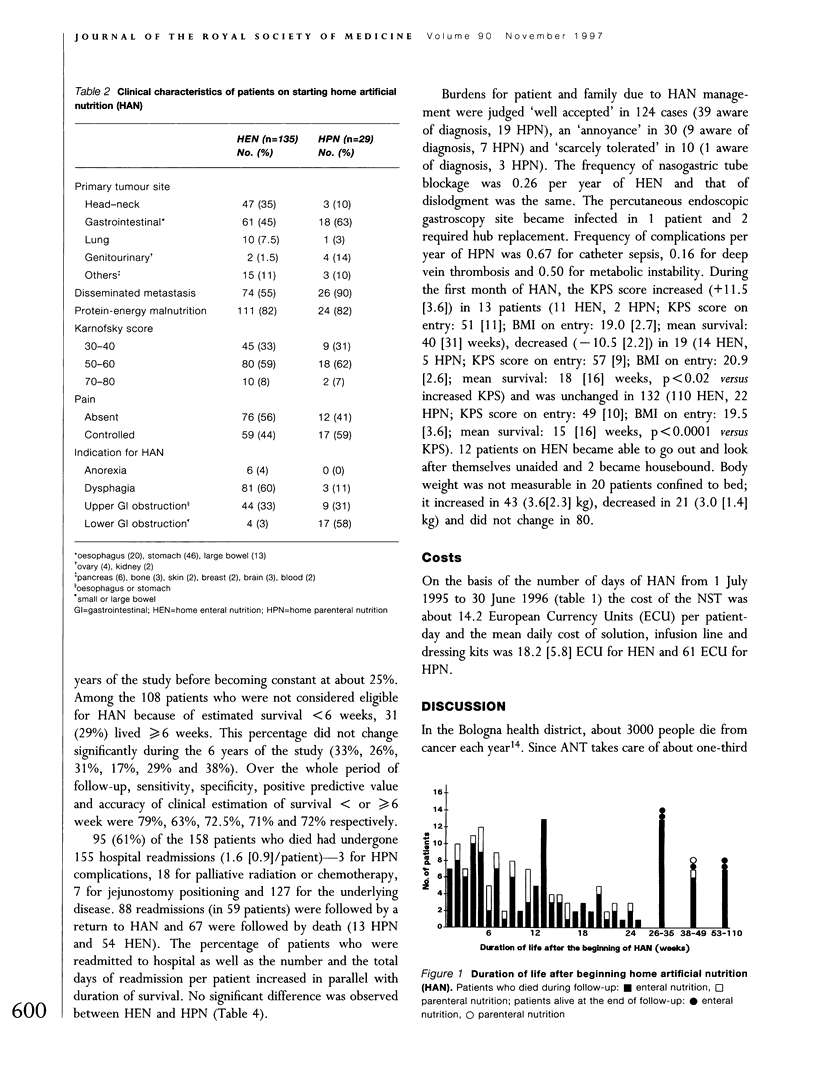
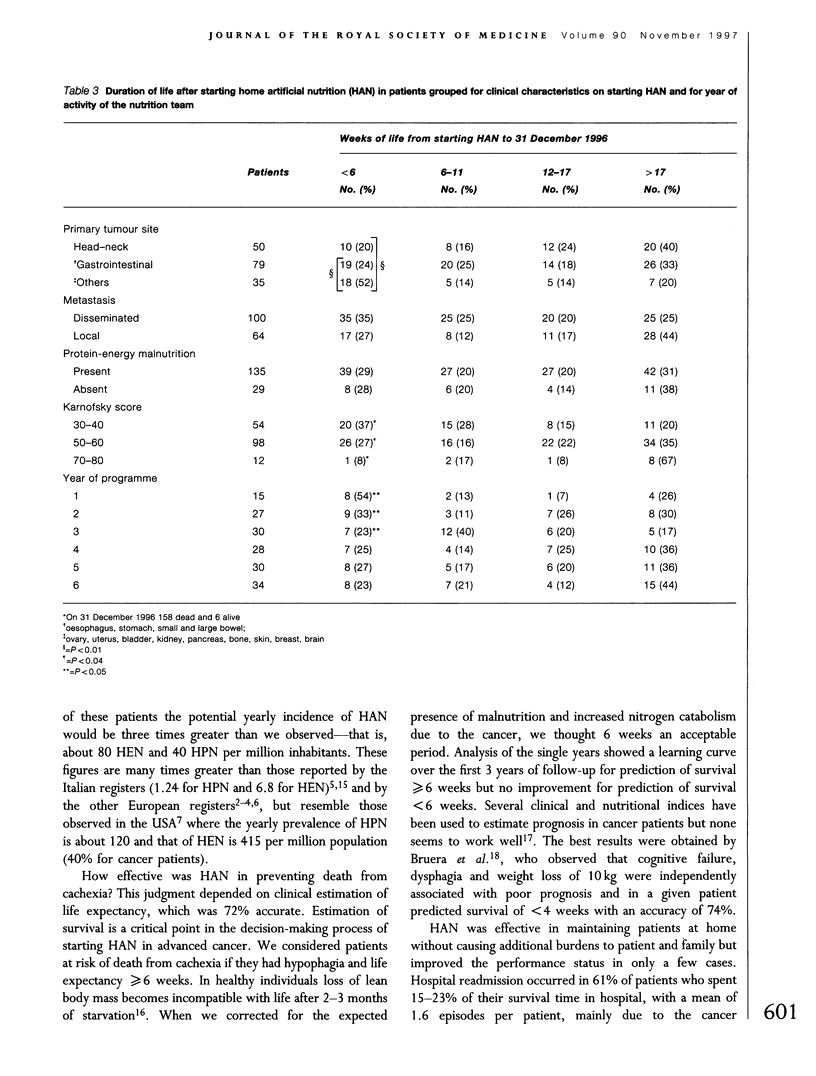
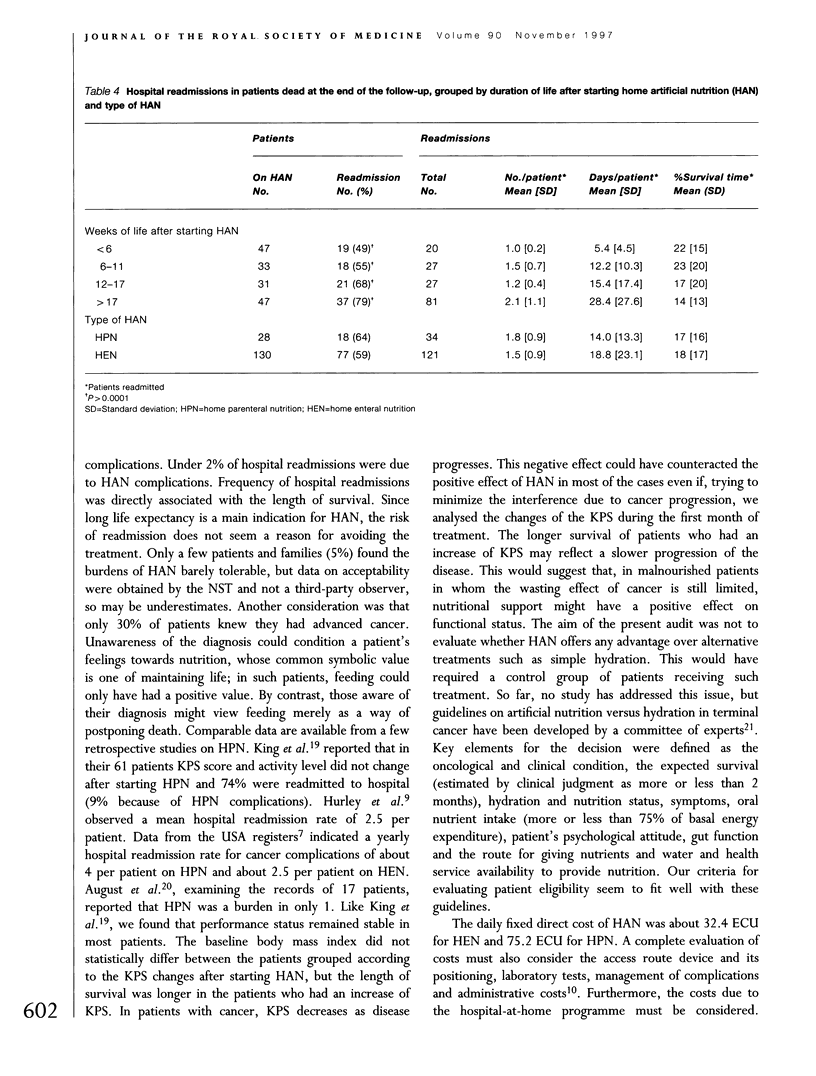
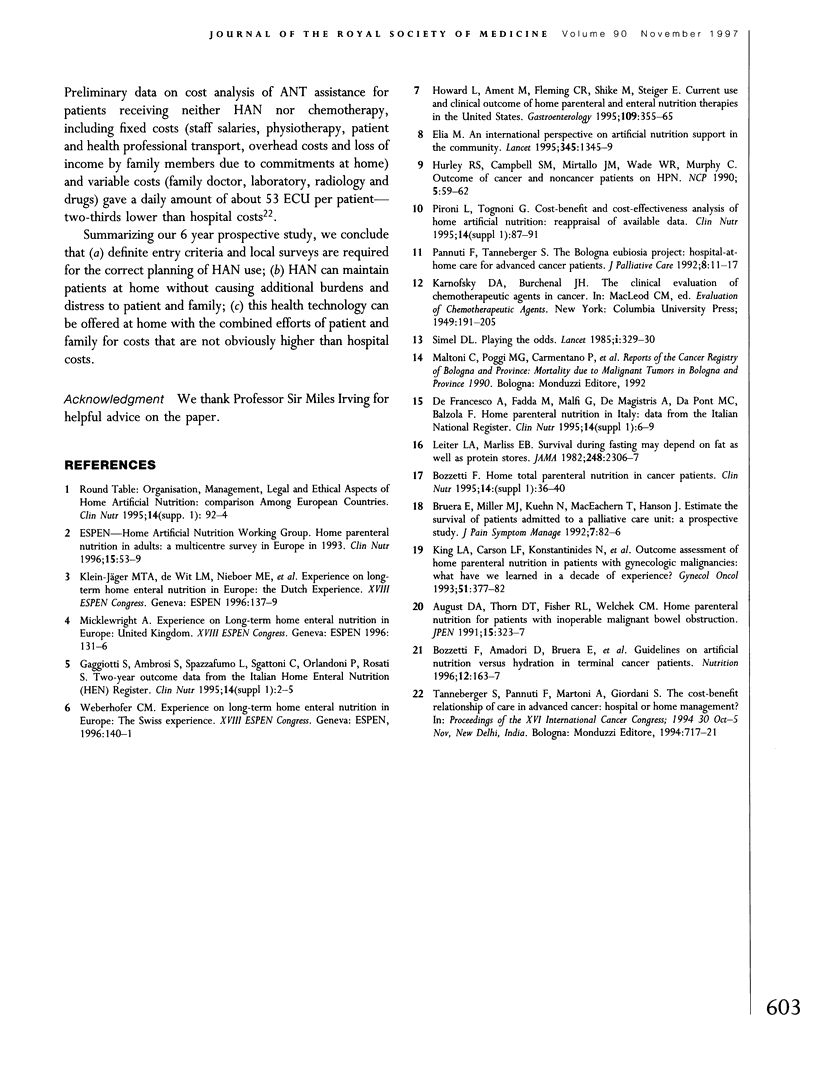
Selected References
These references are in PubMed. This may not be the complete list of references from this article.
- August D. A., Thorn D., Fisher R. L., Welchek C. M. Home parenteral nutrition for patients with inoperable malignant bowel obstruction. JPEN J Parenter Enteral Nutr. 1991 May-Jun;15(3):323–327. doi: 10.1177/0148607191015003323. [DOI] [PubMed] [Google Scholar]
- Bozzetti F., Amadori D., Bruera E., Cozzaglio L., Corli O., Filiberti A., Rapin C. H., Neuenschwander H., Aoun M., Ricci S. B. Guidelines on artificial nutrition versus hydration in terminal cancer patients. European Association for Palliative Care. Nutrition. 1996 Mar;12(3):163–167. doi: 10.1016/s0899-9007(96)91120-x. [DOI] [PubMed] [Google Scholar]
- Bozzetti F. Home total parenteral nutrition in cancer patients. Clin Nutr. 1995 Jun;14 (Suppl 1):36–40. doi: 10.1016/s0261-5614(95)80281-9. [DOI] [PubMed] [Google Scholar]
- Bruera E., Miller M. J., Kuehn N., MacEachern T., Hanson J. Estimate of survival of patients admitted to a palliative care unit: a prospective study. J Pain Symptom Manage. 1992 Feb;7(2):82–86. doi: 10.1016/0885-3924(92)90118-2. [DOI] [PubMed] [Google Scholar]
- De Francesco A., Fadda M., Malfi G., De Magistris A., Da Pont M. C., Balzola F. Home parenteral nutrition in Italy: data from the Italian National Register. Clin Nutr. 1995 Jun;14 (Suppl 1):6–9. doi: 10.1016/s0261-5614(95)80273-8. [DOI] [PubMed] [Google Scholar]
- Elia M. An international perspective on artificial nutritional support in the community. Lancet. 1995 May 27;345(8961):1345–1349. doi: 10.1016/s0140-6736(95)92541-4. [DOI] [PubMed] [Google Scholar]
- Gaggiotti G., Ambrosi S., Spazzafumo L., Sgattoni C., Orlandoni P., Rosati S. Two-year outcome data from the Italian Home Enteral Nutrition (IHEN) Register. Clin Nutr. 1995 Jun;14 (Suppl 1):2–5. doi: 10.1016/s0261-5614(95)80272-x. [DOI] [PubMed] [Google Scholar]
- Howard L., Ament M., Fleming C. R., Shike M., Steiger E. Current use and clinical outcome of home parenteral and enteral nutrition therapies in the United States. Gastroenterology. 1995 Aug;109(2):355–365. doi: 10.1016/0016-5085(95)90321-6. [DOI] [PubMed] [Google Scholar]
- Hurley R. S., Campbell S. M., Mirtallo J. M., Wade V. R., Murphy C. Outcomes of cancer and noncancer patients on HPN. Nutr Clin Pract. 1990 Apr;5(2):59–62. doi: 10.1177/011542659000500259. [DOI] [PubMed] [Google Scholar]
- King L. A., Carson L. F., Konstantinides N., House M. S., Adcock L. L., Prem K. A., Twiggs L. B., Cerra F. B. Outcome assessment of home parenteral nutrition in patients with gynecologic malignancies: what have we learned in a decade of experience? Gynecol Oncol. 1993 Dec;51(3):377–382. doi: 10.1006/gyno.1993.1307. [DOI] [PubMed] [Google Scholar]
- Leiter L. A., Marliss E. B. Survival during fasting may depend on fat as well as protein stores. JAMA. 1982 Nov 12;248(18):2306–2307. [PubMed] [Google Scholar]
- Pannuti F., Tanneberger S. The Bologna Eubiosia Project: hospital-at-home care for advanced cancer patients. J Palliat Care. 1992 Summer;8(2):11–17. [PubMed] [Google Scholar]
- Pironi L., Tognoni G. Cost-benefit and cost-effectiveness analysis of home artificial nutrition: reappraisal of available data. Clin Nutr. 1995 Jun;14 (Suppl 1):87–91. doi: 10.1016/s0261-5614(95)80292-4. [DOI] [PubMed] [Google Scholar]
- Simel D. L. Playing the odds. Lancet. 1985 Feb 9;1(8424):329–330. doi: 10.1016/s0140-6736(85)91093-1. [DOI] [PubMed] [Google Scholar]


